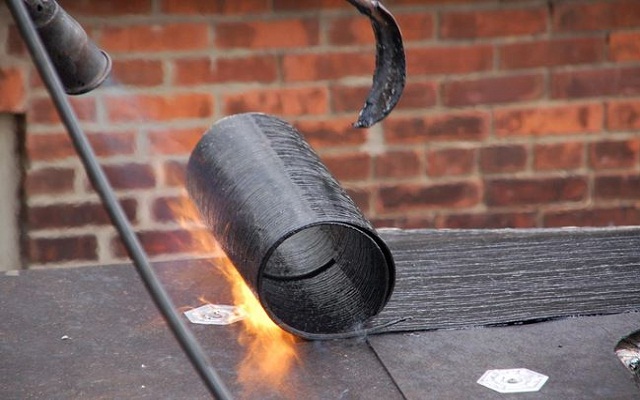Waterproofing
Waterproofing is the process of making an object or structure waterproof or water-resistant so that it remains relatively unaffected by water or resisting the ingress of water under specified conditions. Such items may be used in wet environments or underwater to specified depths.
Water resistant and waterproof often refer to penetration of water in its liquid state and possibly under pressure, whereas damp proof refers to resistance to humidity or dampness. Permeation of water vapor through a material or structure is reported as a moisture vapor transmission rate.
The hulls of boats and ships were once waterproofed by applying tar or pitch. Modern items may be waterproofed by applying water-repellent coatings or by sealing seams with gaskets or o-rings.
Why is it used in roofing?
Looking back into the history of bitumen, there are examples of its waterproofing capabilities being used to bond walls of water tanks together as early as 3000 BC. Since then, bitumen has remained one of the leading roofing components still used today, with 10% of global bitumen production going to roofing where its waterproofing is invaluable.Over the years, developments in technology and materials have paved the way for innovative roofing systems. As such, modified bitumen is one of the most common materials used for membrane roofs which are typically found on most commercial buildings, as well as an increasing number of residential properties, too.
Advantages of Bitumen Roof:
One of the longer lasting roofing options for flat roofs is bitumen roofing or a modified bitumen roof. Modified bitumen is a type of asphalt product that can be applied in a number of ways to the roof in both hot and cold temperatures. Modified bitumen roofs have a lot of advantages over other types of membrane roofing, and are often seen as the modern alternative to the built up roof.There are several different advantages to using a bitumen roof on your building or home. Unlike some newer types of roofing, it has a long, proven track record that can be counted on. Bitumen roofs are one of the longer lasting types of flat roofing materials, easily lasting 20 years or more.
Regardless of how the material is applied (self-adhesive sheets, hot-mopped asphalt, or cold-applied adhesives) the seams are usually melted together which help stop leaks. Other types of membrane roofing have seams that are left open or covered with another material that can weaken over time, so the fact that a bitumen roof can be seamless is a big advantage.
Bitumen roof is also very durable. They have a high-tensile strength so they are unlikely to develop the kinds of cracks that other flat and membrane roofs are known for. They are also rated against wind, fire, and hail so they are unlikely to be damaged in the event of a storm. Included in this is usually a very long manufacturer’s warranty that can help to guarantee the roof’s longevity





